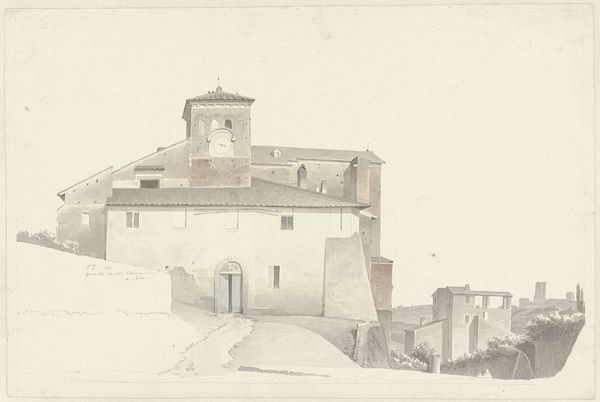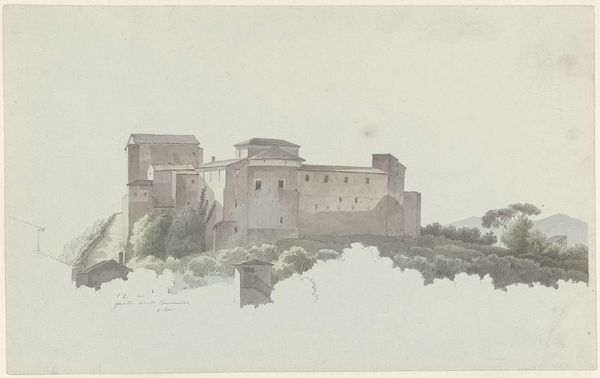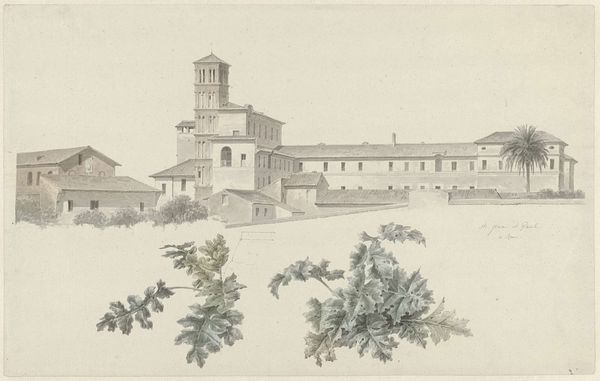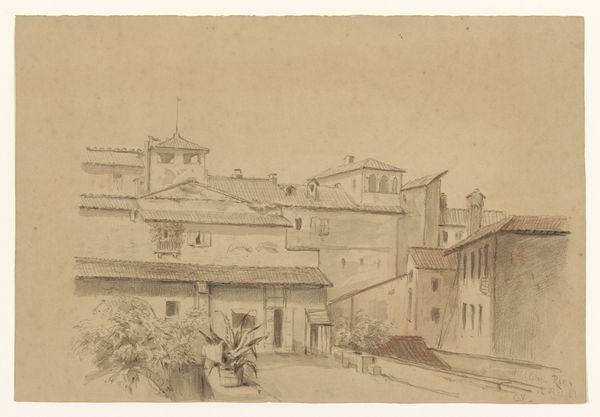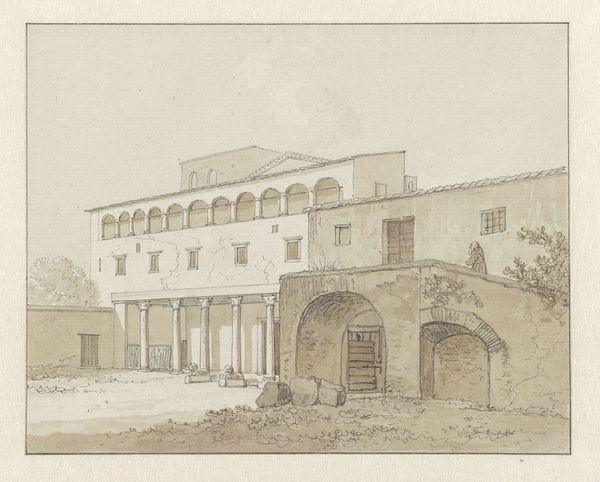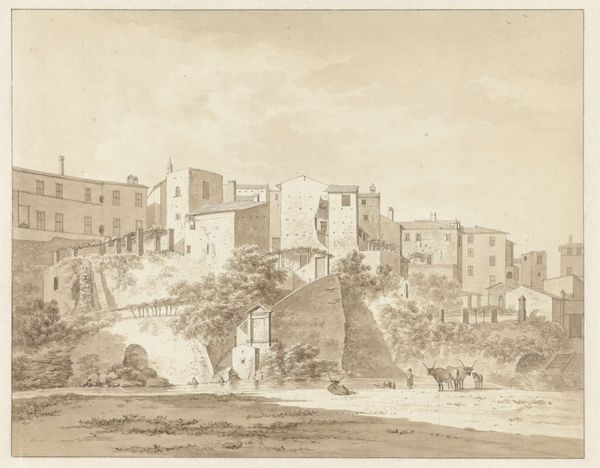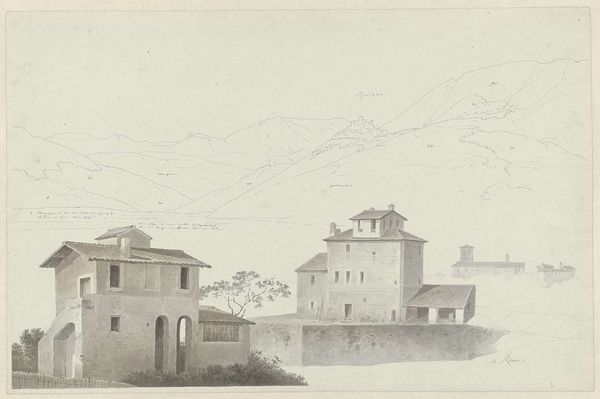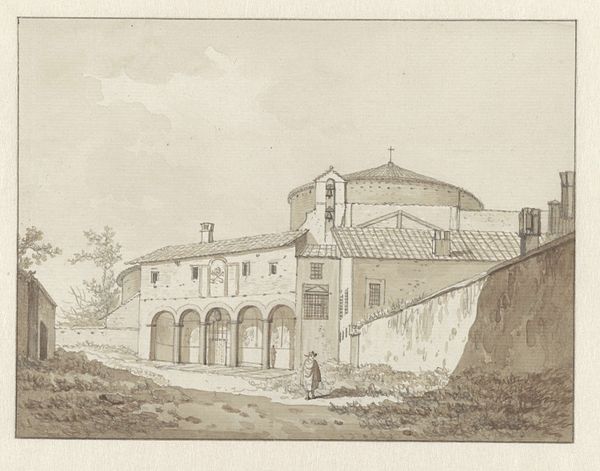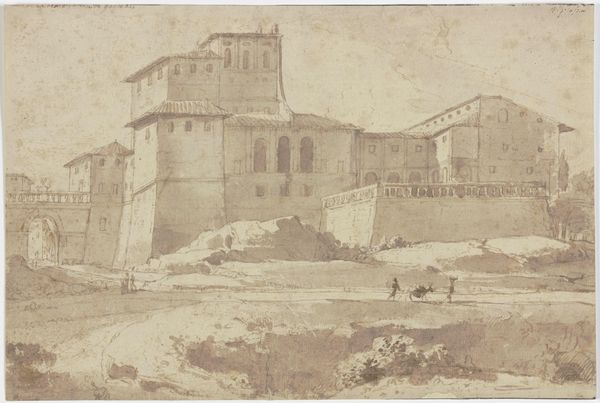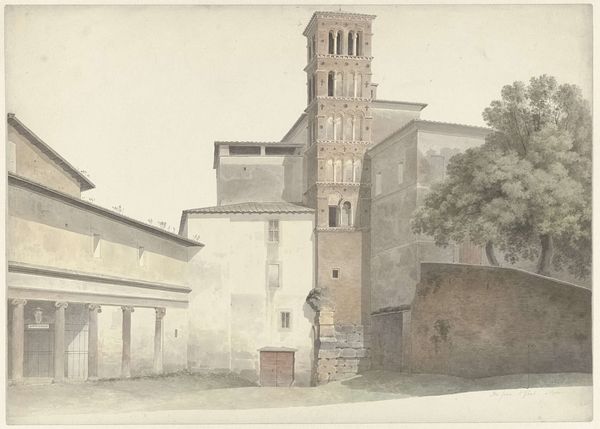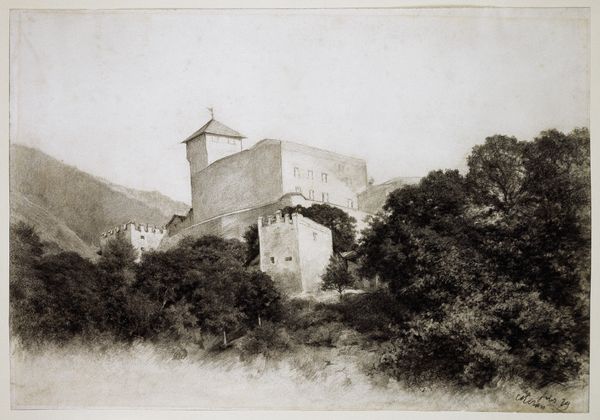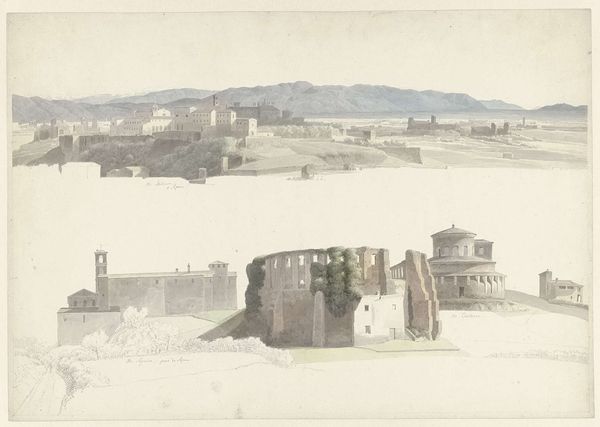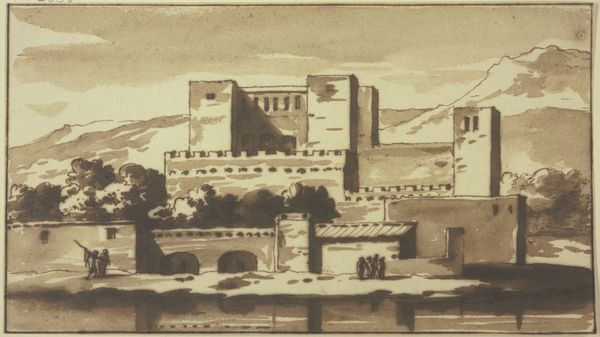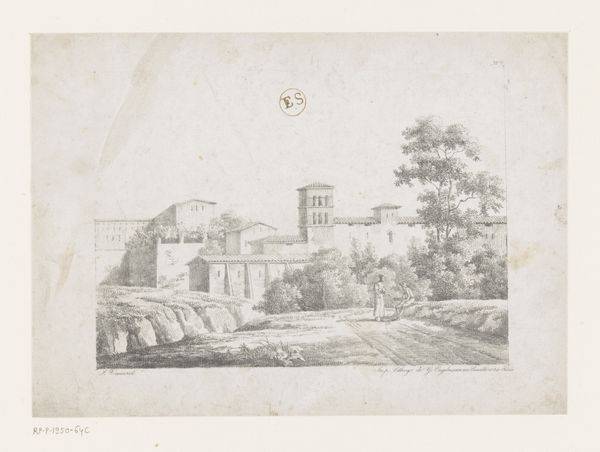
drawing, watercolor, architecture
#
drawing
#
pencil sketch
#
light coloured
#
landscape
#
watercolor
#
romanticism
#
cityscape
#
architecture
Dimensions: height 305 mm, width 465 mm
Copyright: Rijks Museum: Open Domain
Josephus Augustus Knip captured the Basilica and Monastery of Santi Giovanni e Paolo in Rome in this drawing. The cross, atop the basilica's bell tower, stands as a prominent symbol of Christian faith, a beacon that has undergone a fascinating metamorphosis through time. Consider the Ankh of ancient Egypt, a symbol of life, which, after the Roman Empire adopted Christianity as its state religion, was reborn as the crux ansata, and later, the cross we recognize today. This evolution reveals how symbols migrate and adapt, imbued with new cultural significance while retaining echoes of their past. From ancient Egypt to the modern-day cross, it is a transformation influenced by both collective memory and the subconscious need to connect with something eternal. Observe how this symbol inspires faith, hope, and even fear across time and cultures. The cross, therefore, is not just a static emblem but a dynamic carrier of history, resurfacing and evolving to reflect changing human experiences and beliefs.
Comments
rijksmuseum about 2 years ago
⋮
At the far right is Clivus Scauri, an ancient road spanned by seven brick arches leading to the square before the church. Part of the church itself is visible, the splendid Romanesque apse adorned with a frieze of round arches on pillars. Further to the left is the Romanesque bell tower with the adjacent monastery complex.
Join the conversation
Join millions of artists and users on Artera today and experience the ultimate creative platform.
